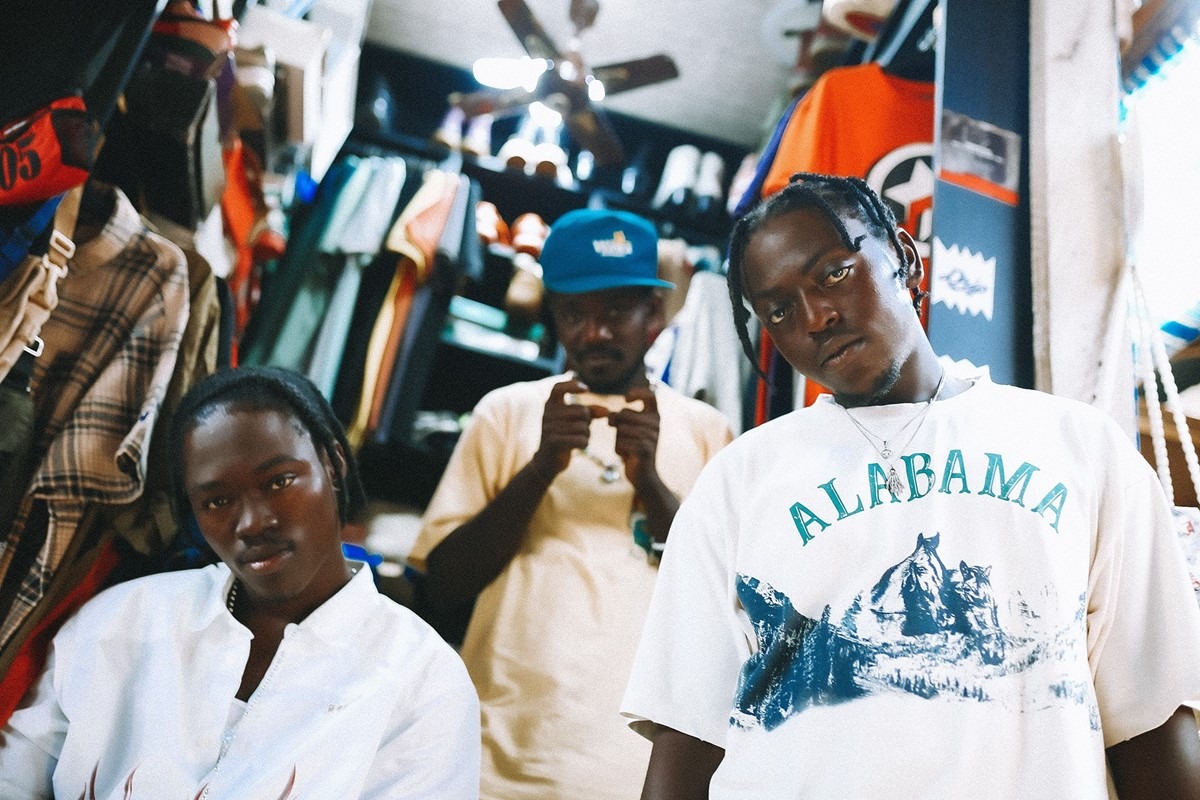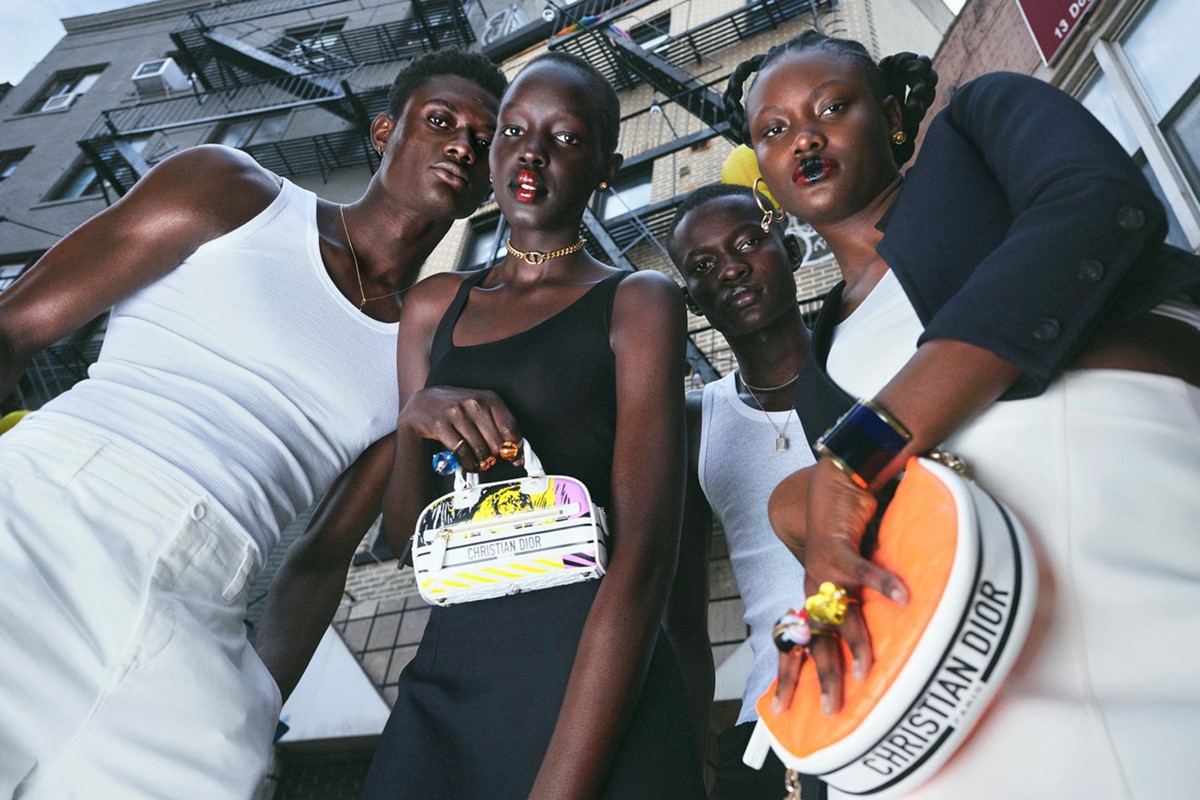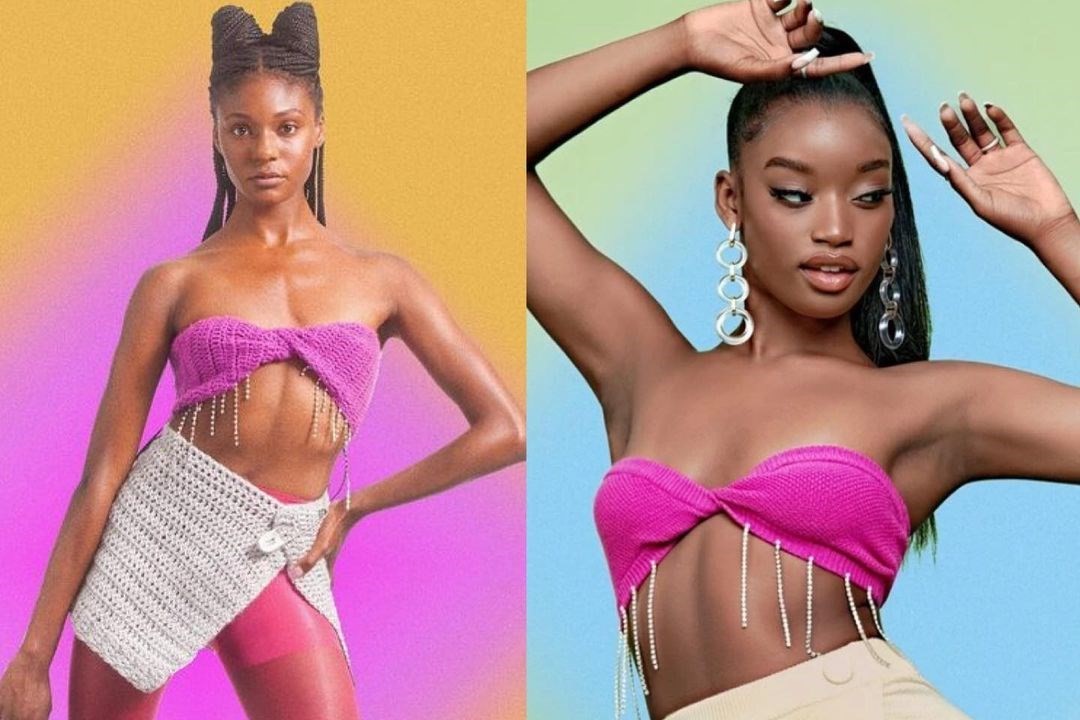
The secondhand market at the heart of Ghana’s fashion revolution
The largest secondhand market in Ghana, Kantamanto is fuelling a new wave of creatives championing a fashion culture that is unique to the West African nation
My home country of Ghana is well-known for its tourism, particularly now that more people are travelling here to celebrate Detty December. But, what’s still to be explored are the creative scenes that are bubbling up in the country, from the arts, to music, to fashion.
Fashion, in particular, has experienced a recent boom here, as more and more young people have taken an interest in fashion and taken strides to promote a style culture unique to this nation.

Despite being influenced by western media, fashion creatives here have learned to build upon what they see from the west. And, since most of the popular American and European brands that are glamorised don’t have a retail presence in Ghana, designers and stylists in Accra have not only leaned into their innovation to turn something out of nothing – and have excelled in doing so.
However, our fashion ecosystem’s growth is not only rooted in the innovation of these people, but on a market that was around long before the fashion revolution began. Kantamanto is the largest secondhand market in Ghana. It is the go-to place for cheap clothes and helped popularise the term “Obroni Wawu”, which directly translates into “Dead Man’s Clothes”. Kantamanto Market is the resting place for all these clothes and is a source not only of designer items but of rare fabrics too.


Thanks to Kantamanto, a thriving thrift culture has emerged in Accra. With the market easily accessible to everyone, people in search of fashion items can take a quick trip and get whatever they need.
A self-taught designer and stylist, Adom Gee makes the trip to Kantamanto at least three times a week since he relies on the market for fabric in designing for his fashion brand, ‘Adom Gee The Brand’. “Walking through Kantamanto just gives me the inspiration to create more,” he says. Working in the fashion industry for some time, he knows all the nooks and crannies of this expansive market to get what he wants, but even he admits that “you never know what you will come and find here”.
“I feel like Kantamanto will forever be a relevant part of Ghana’s fashion ecosystem” – Larley Lartey
As one of the new creatives shaking things up in the fashion space, Adom is grateful for a market like Kantamanto that allows him to create custom pieces for his brand. He is slowly being recognised for his styling of Ghanaian rapper Kwesi Arthur and his African-rooted designs for his brand.
Speaking to Accra-based model-turned-stylist, Larley Lartey, she says her history with Kantamanto goes back to her school days, when she always wanted to be the the coolest person in the room. “I remember leaving my senior high school during class to go to Kantamanto to get some clothes because I wanted to look cool.” In her styling work, Larley imagines the looks in her head and uses Kantamanto as her means of making these visions a reality, whether she acquires a particular fashion piece or creates it from scratch with fabric sourced from the market.


However “the demand is higher than the supply,” she laments, as more people join her in using Kantamanto for their fashion needs. Today, Lartley is collaborating with some well-known Ghanaian music acts, including Stonebwoy and King Promise, and she has aspirations of doing the same with international acts, like Dua Lipa or Kali Uchis.
Nutifafa is a creative multihyphenate, working as a model, stylist, creative director, and environmentalist, who prides herself on her unique point of view, which doesn’t simply go along with the trends. Moving to Accra at a young age, she quickly realised that most people were just emulating whatever they saw from the west at the time. However she dared to be different and has proven herself in her craft. Working on fashion campaigns in various capacities, such as styling and creative direction, her different approach to fashion has been the key to her success in the industry. Kantamanto is also the bedrock for Nutifafa because she proudly states that most of her clothes are thrifted from the market. “Kantamanto is the place to help you find your sense of style,” she says. Though Kantamanto has its benefits, it’s not all rosy as Nutifafa is worried about the environmental impact of the tonnes of clothes coming in weekly. In the hopes of combating this, she pushes for recycling and repurposing of clothes through her brand Upcycled Ghana.
“Kantamanto is the source for all luxury clothing items we usually wouldn’t have access to” – Drip Drip Styling
Drip Drip Styling is a collective made up of three friends Champagne, 40K Phyll and Webster, who are quickly gaining traction in the industry. First meeting at Kantamanto, they came together with the dream of making money selling second-hand clothing have upgraded to household names in the styling industry. The team mentions how easy it is for them to find rare clothing items in bales. As a lover of Prada bags, 40K shows off some merch from the luxury brand he has chanced upon while thrifting. “The quality of the goods that come now in the bales is dwindling,” says Champagne when he talks about some of the challenges they face. Despite some challenges, the guys attribute part of their success in styling to the accessible market they find themselves in. The group is expanding into designing for a brand they have created, D2 Essentials as an addition to the styling of some big names in the African music space.
It’s wonderful to see the growth of the fashion industry in Ghana on the back of a market some will not pay attention to. These creatives and others are part of a movement trying to elevate the fashion industry with what they have access to. With their dreams, ambitions, and hard work, the new age of fashion creatives intends to rise above our challenges and show the world what the nation has to offer in our fashion scene. The future for fashion in Ghana is exciting – and it’s in progress.



